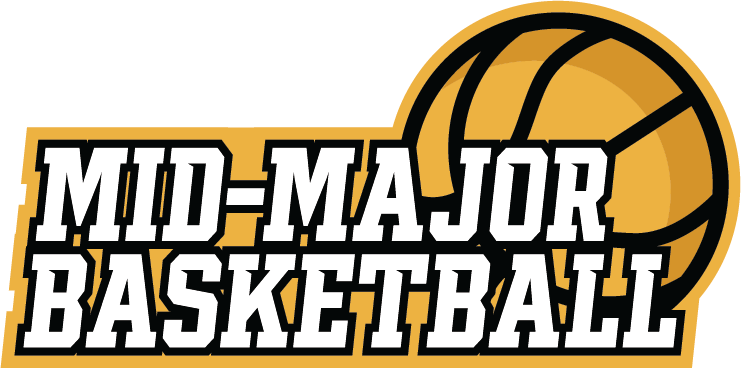Can Ryan Nembhard be the next small guard to make an impact in the NBA?
Over the last 10 to 15 years, NBA teams have become increasingly infatuated with size and length.
Every draft cycle, scouts get enamored with 6-foot-6 wings with long wingspans, the next 7-foot big who can stretch the floor or bigger guards that can play the one and the two.
These archetypes are valuable, and positional size is paramount (especially during the playoffs), but the meteoric shift has made guards under 6-foot-3 seemingly less valuable to NBA teams.
Sam Vecenie, one of the league’s most respected writers and draft evaluators, does not rank a single player under 6-foot-4 in the lottery because, in his eyes, smaller guards must be All-Star caliber to return starter-level value in today’s NBA.
That belief carries some validity. However, every so often, a few small guard slips through the cracks and make one reminisce about the days when it was acceptable for point guards to look like run-of-the-mill humans.
Players like Fred VanVleet, Payton Pritchard, Dennis Schroder and Miles McBride have made an impact while not being stars.
Need any more evidence?
Watch 30 seconds of T.J. McConnell in the NBA Finals.
McConnell looks like he could be an insurance agent or a car salesman, yet he’s been the driving force of the Pacers’ bench throughout the playoffs.
In the last two games leading up to Game 7 of the NBA Finals, he has entered and made an immediate impact. Despite being the smallest player on the floor most of the time, he has attacked the Thunder’s bigger and stronger defenders with a reckless abandon.
He’s weaved in and out of traffic, spun off of defenders’ bodies, and gotten to his patented mid-range fade away. McConnell has done it on both ends as well. For some reason, the Thunder have been negligent with inbound passes, and he’s taking advantage, stealing the ball to create extra possessions.
Over the last two games, McConnell has accounted for 58 points in 46 minutes, and the Pacers are a plus-21.5 with him on the floor.
His display of “heart-over-height” should give hope to other smaller guards looking to make an impact in the NBA.
His play in the finals and throughout his career inspired this scouting report.
There is a player in this year’s draft who, like McConnell, is an undersized guard, not a great shooter or athlete, spent four years in college.
That player is Ryan Nembhard, and he should be familiar with McConnell, seeing as he’s the younger brother of his teammate, Andrew Nembhard.
The former Gonzaga Bulldog has his work cut out for him. Since 2008, only 28 players who are between 5-foot-11 and 6-foot-2, played four years in college and had an assist percentage over 30, have made it to the NBA.
Fifteen of those players went undrafted, and only seven have carved out a role in the NBA.

Let’s dive into why Nembhard can beat the odds.
Strengths: Pick and Roll Playmaking, processing, defensive Motor
The first prerequisite for being impactful as a smaller guard in the NBA is having a good feel for the game. It is essential to capitalize on advantages, get your teammates involved and minimize turnovers.
Fortunately for Nembhard, he already has that part down pact. During his time in college, he was one of the best floor generals in the country, averaging 6.6 assists per game with a 2.64 assist-to-turnover ratio.
His numbers blossomed during his last season in which he averaged 9.8 assists per game, had a 41.5 assist percentage anda 3.9 assist-to-turnover ratio. Nembhard was one of the better pick-and-roll operators in the country, generating 1.049 points per possession (86th percentile) as the ball handler.
The Ontario, Canada native is adept at reading and manipulating defenses as a passer. Nembhard is a roller’s dream pick-and-roll partner because he reads the low man very well, has a great pocket pass and hits his teammates with quick and accurate passes. While Nembhard was on the floor, the Bulldogs had a 127.4 adjusted offensive rating (98th percentile).
The second prerequisite for smaller guards who want to stay in the league at some capacity (see Jose Alvarado, Fred VanVleet, Mike Conley, T.J. McConnell) is defensive intensity.
Because he’s undersized, teams will attack Nembhard using guard-guard and guard-wing pick-and-rolls to force him to switch onto bigger players. Players of his size must be pesky at the point of attack, learn how to front bigger players andwreak havoc on the game.
Nembhard showed signs that he could do this in his last year at Gonzaga. He has active hands and uses quick swipes to generate turnovers (2.8 steal percentage in 2025). He’s active at the point of attack and tries to fight over and around screens.
Concerns and Improvement Areas: Shooting Consistency, Size, Rim Finishing
Outside of his apparent lack of size and vertical athleticism, Nembhard has struggled as a scorer throughout his collegiate career. He’s a pass-first player, which is fine, but he’s been an inconsistent shooter and had his best shooting year on low volume (40.4% on 4.4 attempts per 100).
Due to his lack of size, it has been difficult for him to finish in the paint. He’s only finished above close to 60% at the rim in the halfcourt once (64% in 2025), and length on the interior bothers him. Nembhard needs to improve his touch in the restricted area of the paint. He’s historically been underwhelming on floaters and runners and can benefit from utilizing a mid-range jump shot.
Nembhard competes on defense, but it will be an uphill battle for him to overcome his 5-foot-11, 176-pound frame in the NBA against bigger and more athletic players than he faced in college.
With his age, size, and lack of consistent scoring punch, can he stick in the NBA?
Projected Role: Back-up Floor General, 3rd Guard
If Nembhard finds a role in the NBA, it will likely be as a backup or third-string point guard tasked with running bench units.
Think of Jordan McLaughlin as a lower-tier outcome, and Tyus Jones, a mistake-free table setter, as a higher-end outcome if he can become a more consistent 3-point shooter.
Nembhard will likely go undrafted or be selected in the late second round, but is a solid bet to outplay his draft slot in the right situation.
Sure, he’s not your prototypical point guard in today’s NBA, but some guys can get by simply “knowing how to play basketball.”
We know that he’s lacking in the things that you can measure, such as height and athleticism, but does he possess the intangibles that won’t show up in a box score?
Time will tell if Nembhard joins the rare fraternity of undersized and overlooked guards that outwork their odds and make a mark in the NBA.






